Using Skills
AnywhereNow uses Skills to find the right Agent in real time for each call.
AnywhereNow allows you to define Skills for each individual UCC A Unified Contact Center, or UCC, is a queue of interactions (voice, email, IM, etc.) that are handled by Agents. Each UCC has its own settings, IVR menus and Agents. Agents can belong to one or several UCCs and can have multiple skills (competencies). A UCC can be visualized as a contact center “micro service”. Customers can utilize one UCC (e.g. a global helpdesk), a few UCC’s (e.g. for each department or regional office) or hundreds of UCC’s (e.g. for each bed at a hospital). They are interconnected and can all be managed from one central location. and assign them to Agents. AnywhereNow uses these Skills to match incoming calls/dialogues with the best available Agent for that specific dialogue.
To use Skills for a UCC, you need to do the following:
- Define the Skills you need for your application.
- Assign appropriate skills to your Agents.
- Assign skills to IVR Interactive Voice Response, or IVR, is a telephone application to take orders via telephone keypad or voice through a computer. By choosing menu options the caller receives information, without the intervention of a human operator, or will be forwarded to the appropriate Agent. Questions (at a bare minimum to basic questions).
When a customer contacts the UCC and makes a menu choice, AnywhereNow checks which Skills (if any) are configured, and uses this information to find the most appropriate agent. Agents are prioritized according to their skill scores. Agents with a 100% score on a particular Skill will be hunted, then Agents with lower scores will be hunted (depending on the HuntingMethod). If there are no competent Agents available, the caller will enter the queue until an Agent becomes available or an escape is configured.
Hunting methods
The UCC uses different methods to select the best available agent. By default the UCC uses the following logic:
-
Get all Agents who have the chosen Skill
-
Presence Based Routing
- Only select the Agents who are available. (can be overruled)
-
-
Agents are hunted based on their Skill score. The Agent with the highest score on the required Skill will be selected first. (Not used in Roud-Robin or Serial hunting method)
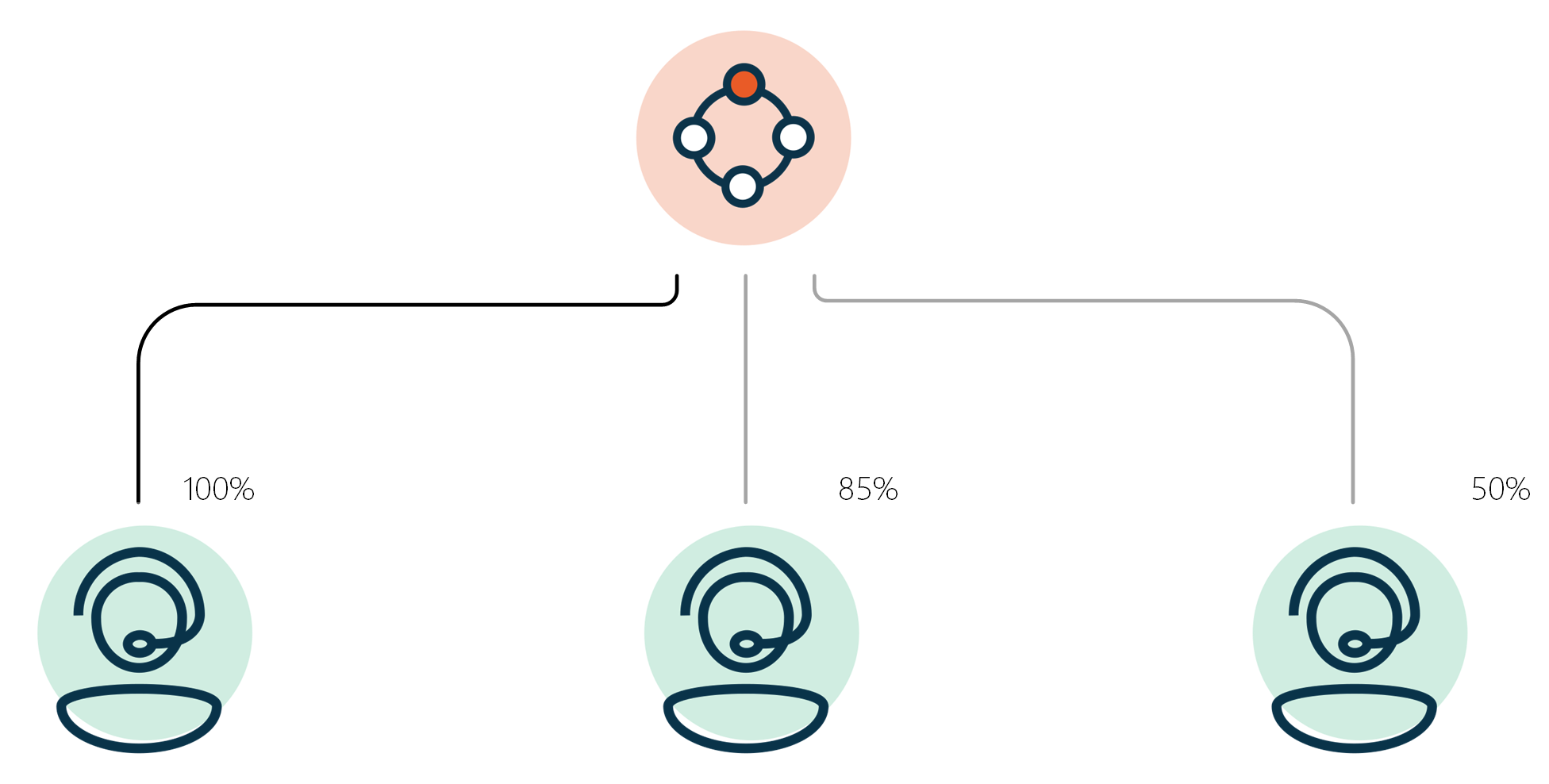
-
-
Automatic Call Distributor Automatic Call Distributor (ACD), also known as Automated Call Distribution System, is a component that redirects incoming calls to Agents. (ACD Automatic Call Distributor (ACD), also known as Automated Call Distribution System, is a component that redirects incoming calls to Agents.) Method
-
If multiple Agents score equally on above logic parameters, then an Automatic Call Distributor (ACD) strategy will be used to select an Agent. There are seven methods (Longest idle, Round Robin, Serial, Parallel, Longest available, Least calls, Least Occupied) available.
-
If a customer calls the UCC and multiple Agents (with identical highest score) are available. If the strategy to hunt an Agent is "Longest Idle", AnywhereNow will choose the Agent who has not received (inbound), or made (outbound), a UCC conversation for the longest period of time when a customer has chosen a skill. When the Agent leaves the conversation, either through disconnecting or transferring, the last conversation datetime for that agent is updated, upon which the UCC will base the hunting order for the next UCC hunt.
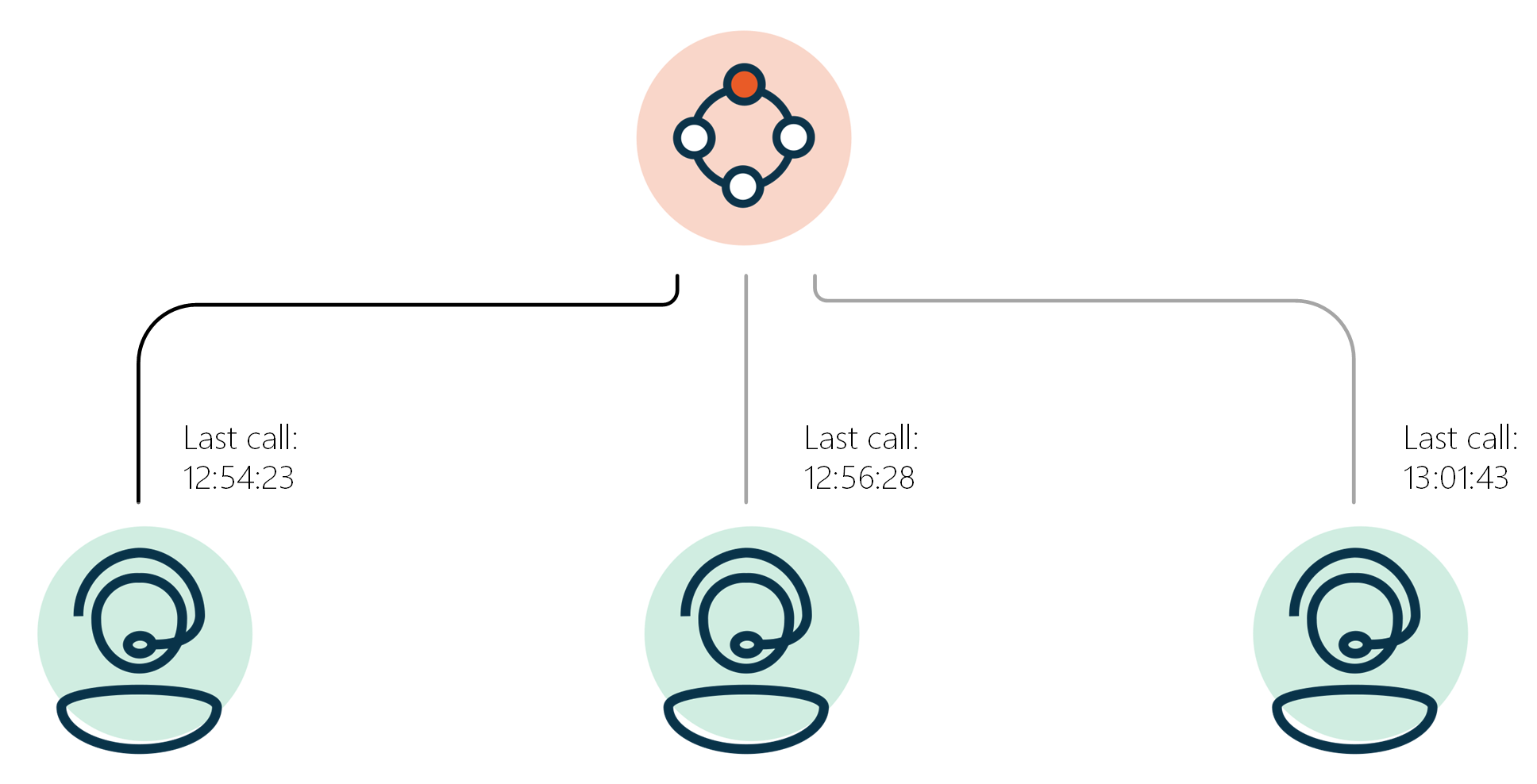
If the strategy to select an Agent at the UCC is "Longest Available", AnywhereNow will choose the Agent who has been Available for the longest period of time. The timer is reset whenever an Agent changes their presence status.
Note
Pay attention to the UCC setting LowestHuntPresence. This setting determines which agent statuses are considered "Available".
For example, if LowestHuntPresence is set to "Away," the system will consider agents with "Available" or "Away" statuses as "Available". This means that if an agent changes to "Away," it will reset the Available since timer.
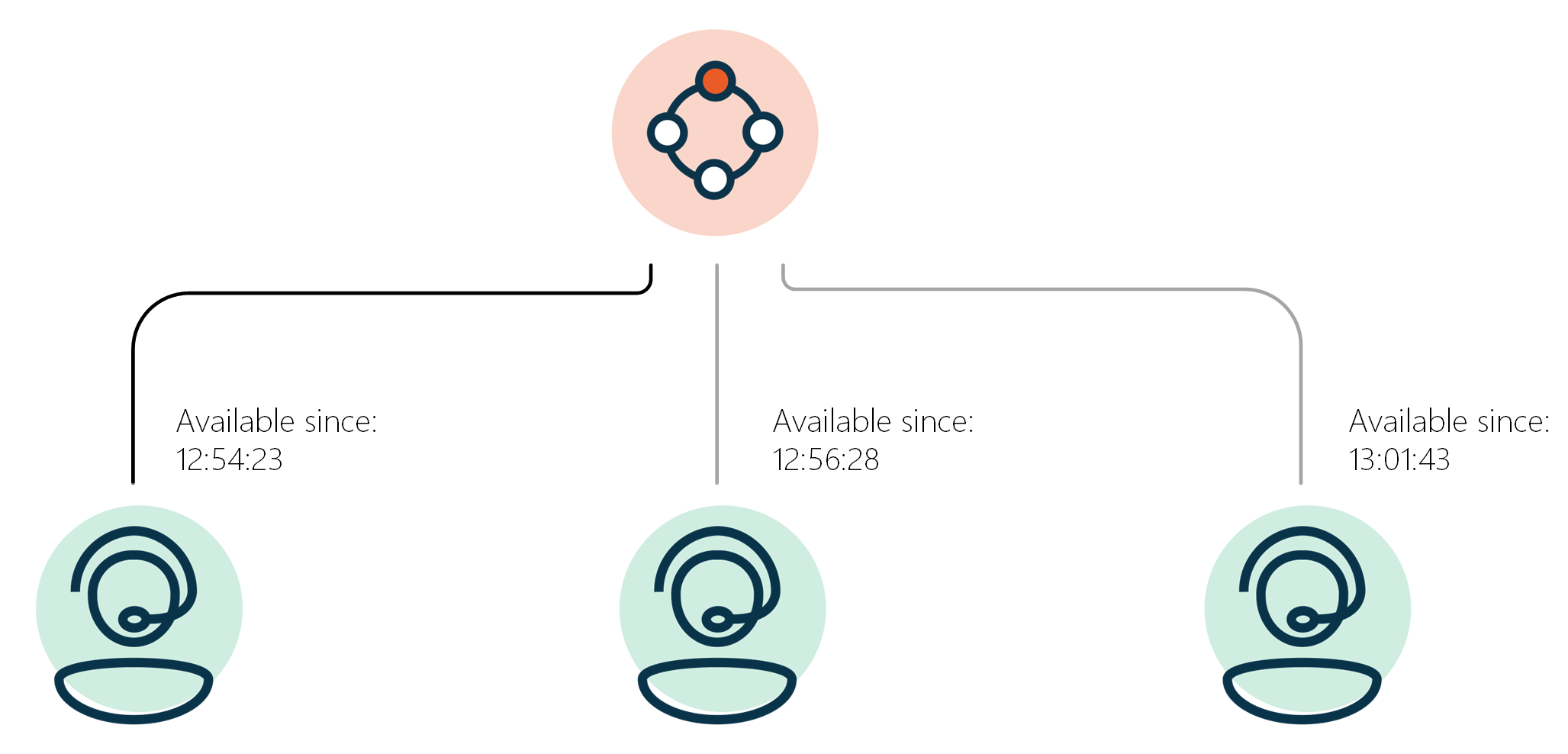
Important
Because this is a pre-defined (i.e. intentional) order hunting method, this hunting method will use the order number in the agent list and Skill Scores will be ignored. To prevent unpredictable agent hunting, each agent should be configured with a unique order number.
If the strategy for selecting an Agent is "Round Robin", the UCC will choose the next available Agent following the last used position of the order list. I.e. for a consecutive conversation, the UCC will resume with the agent with next position in the order list. At the end of the order list the UCC will loop back to the beginning of the order list
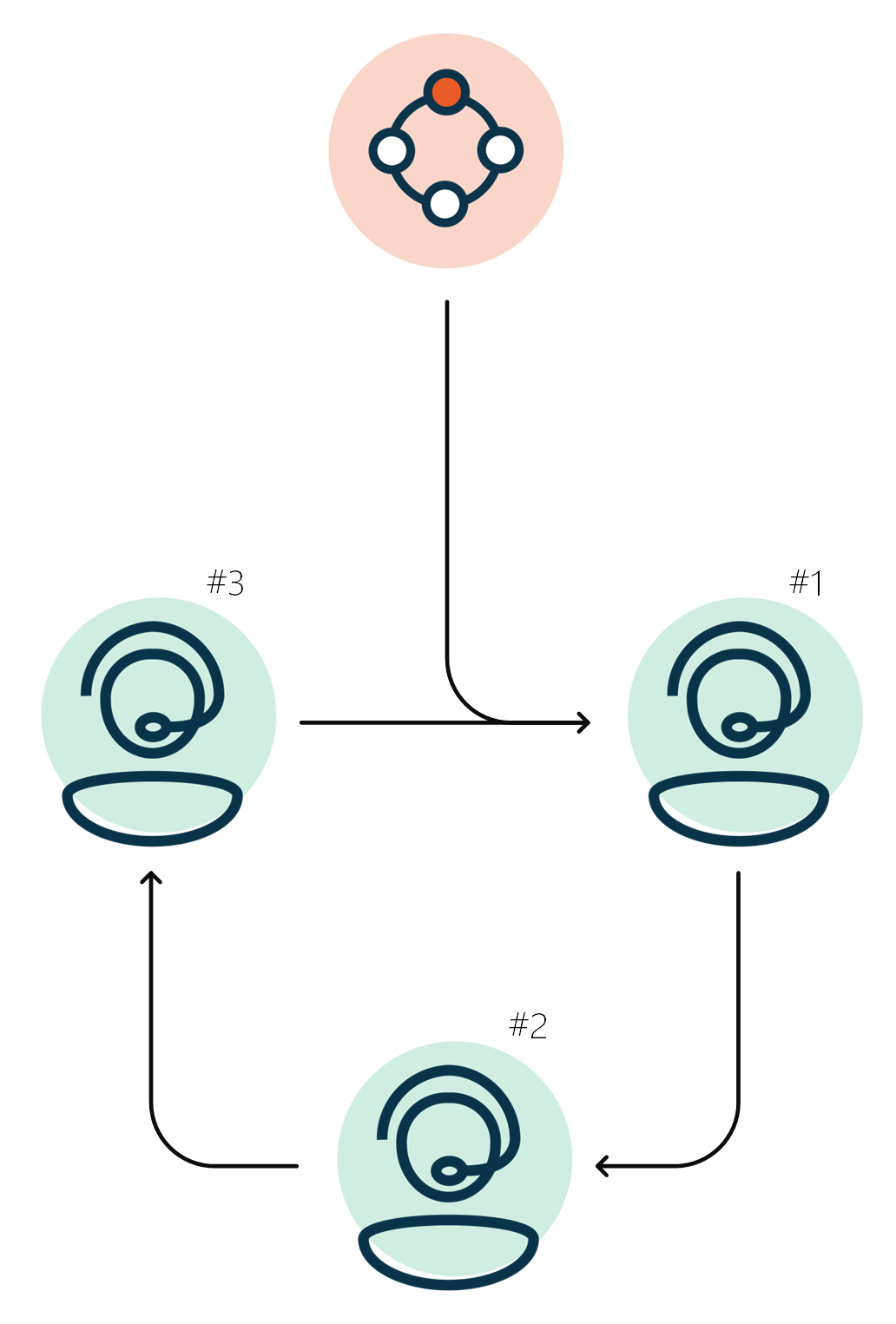
Important
Because this is a pre-defined (i.e. intentional) order hunting method, this hunting method will use the order number in the agent list and Skill Scores will be ignored. To prevent unpredictable agent hunting, each agent should be configured with a unique order number.
If the strategy for selecting an Agent is "Serial", the UCC will always start hunting the first available Agent with the lowest order number in the order list. For a consecutive conversation, the UCC will always start back with theagent with the lowest score in the order list.

If the selection strategy for an Agent is "Least Calls", AnywhereNow will choose the Agent who has handled the fewest calls for the day. This count is reset each day at midnight, based on the timezone of the UCC.
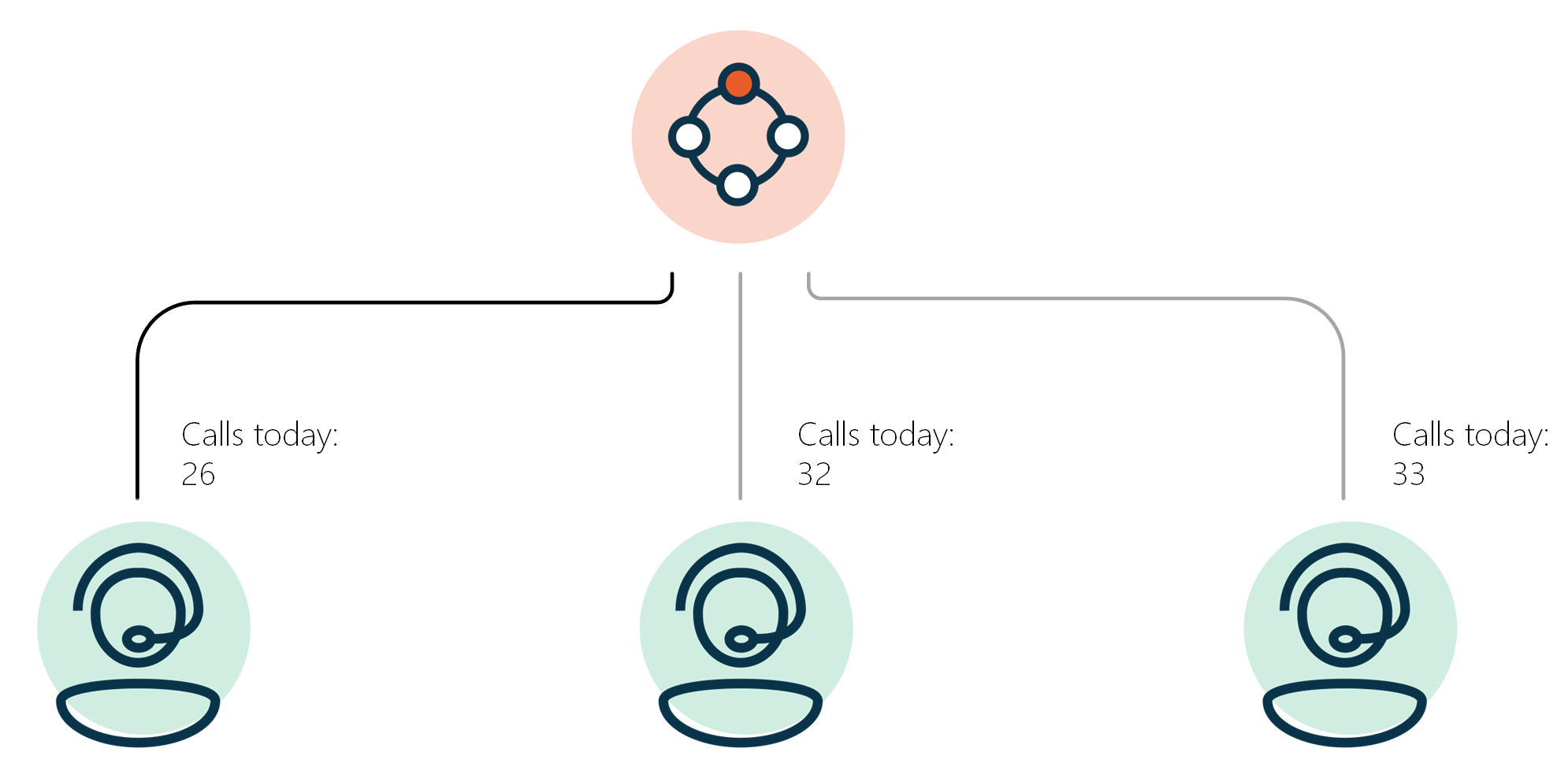
If the strategy to select an Agent is “Least Occupied”, AnywhereNow selects the Agents that has the least total handle time (Talk Time + Discharge Time) today. This count is reset each day at midnight, based on the timezone of the UCC.

Note
Only for audio-calls directly to
A note on Parallel hunting:
Besides the fact that parallel hunting is technically hard to achieve in a softphone based VoIP world (where call delivery and setup times to different endpoints can vary by several seconds), AnywhereNow is developed as a Dialogue Management tool, meaning AnywhereNow should be the decision maker for routing a call to the best fit agent (or audio message) at that time. Parallel hunting should only be considered if no alternative exists.
Parallel hunting will interfere with AnywhereNow's logic if the decision making of picking a call is left up to the agents themselves, effectively by-passing the strategy of AnywhereNow.
The use of Parallel hunting should be considered only as an ultimate solution for very specific scenario's. It is considered a routing mechanism from the past, pre-dating the times of softphones and VoIP, with variables like agent-login/logout and Presence states (available, busy, away, offline) upon which AnywhereNow bases its routing strategies.
If the strategy to select an Agent is “Parallel” AnywhereNow will call all Agents at the same time. (Up to 4 Agent at the same time)
Note
Make MaxReservation setting equals the number of Agents you want to hunt (max 4).
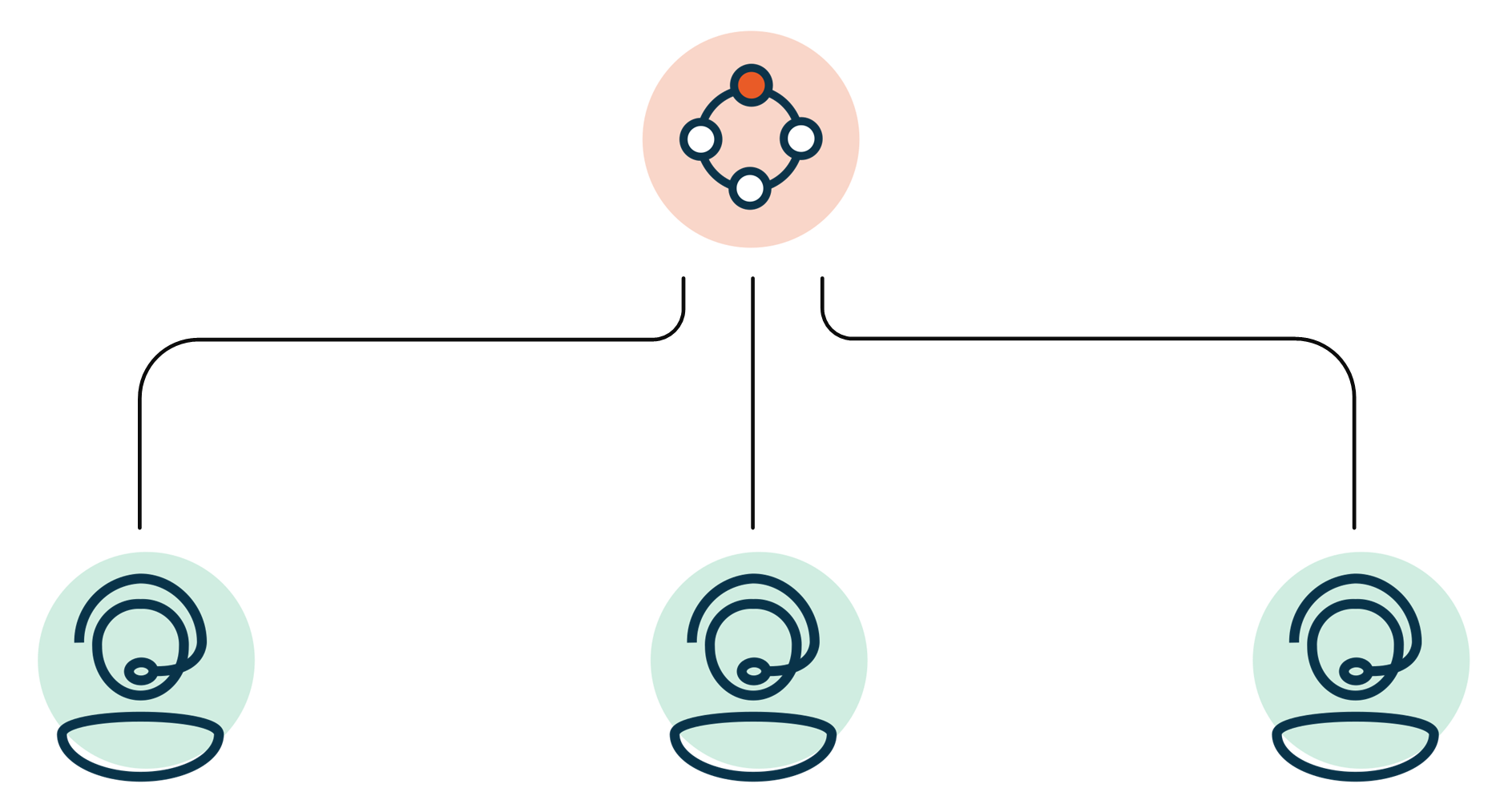
Skill Types
The Skill types below, are all Skills which can be configured in the Skill list. They are used for different purposes (actual skill definition of an agent, routing actions or a combination of agent skills and actions.)
Description
With the standard Skill, Agent can be added with different Skill values. Based upon the presence and Skill value an Agent will be hunted.
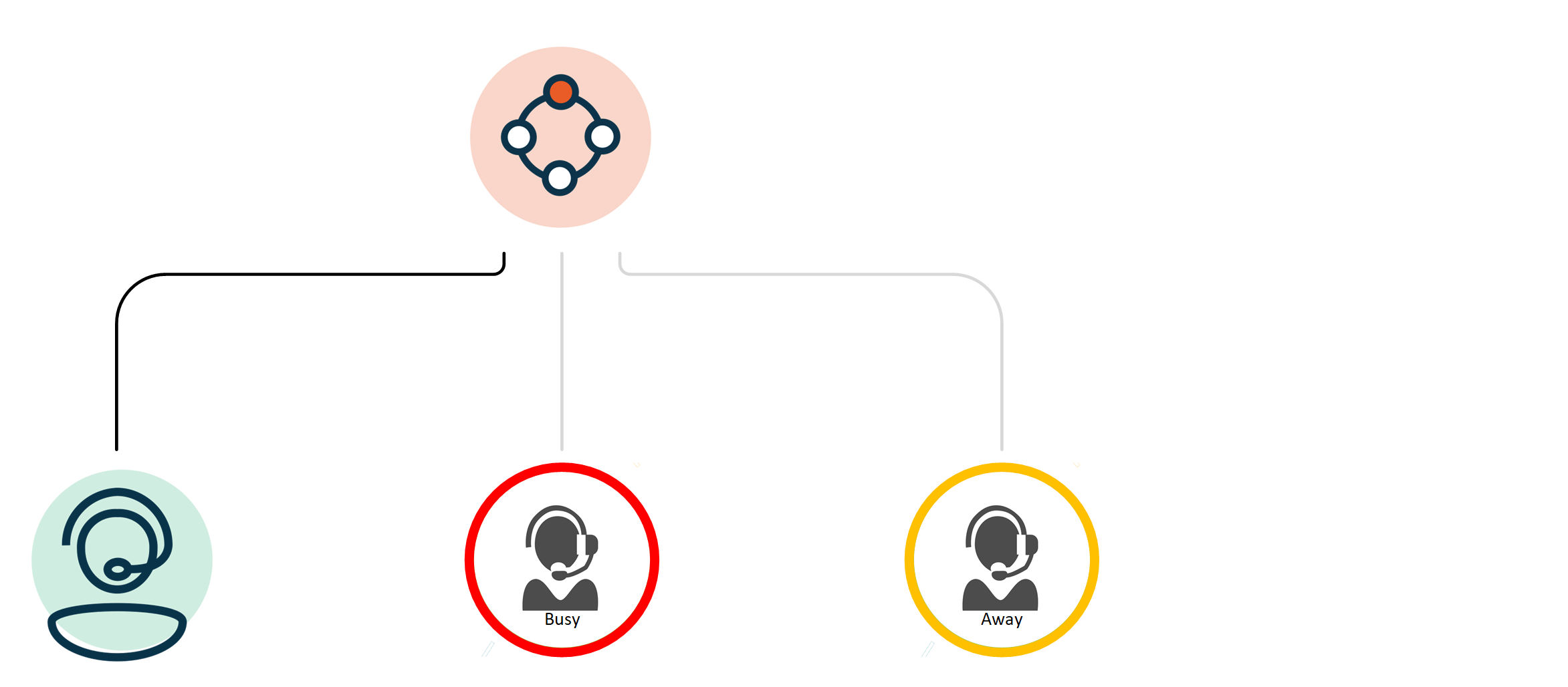
Explanation per field

| Item | Description |
|---|---|
|
Title |
This field contains the name of the Skill. |
|
ShowOnWallboard |
When this box is ticked, the Skill will be shown on the Wallboard. |
Description
An extension to the standard Skill is the Availability Skill. Here the Skill checks of Agents meet the set minimal Skype for Business or Teams presence. If the check comes back negative the Skill is changed to the selected escape skill. If the check comes back positive the conversations continues in the Skill queue. The UCC will keep checking while the Caller is in the Queue.
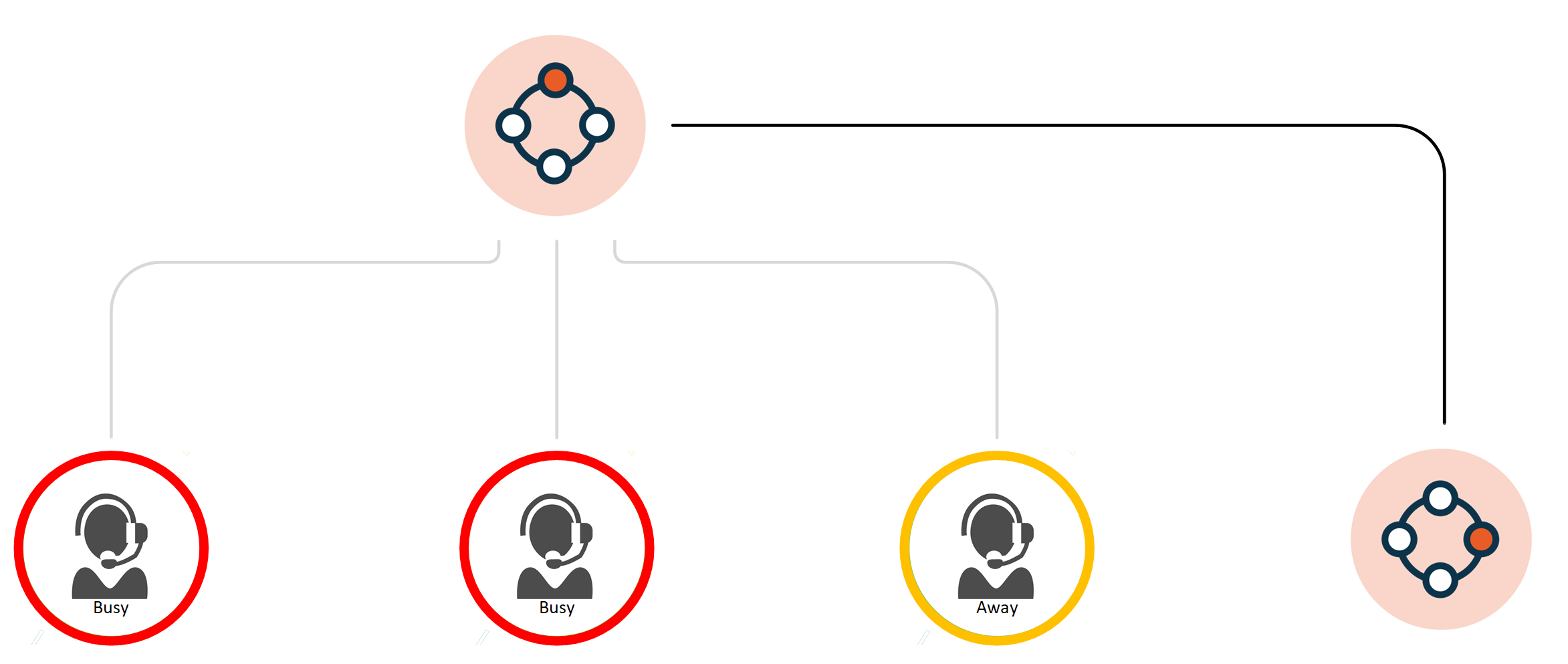
Explanation per field
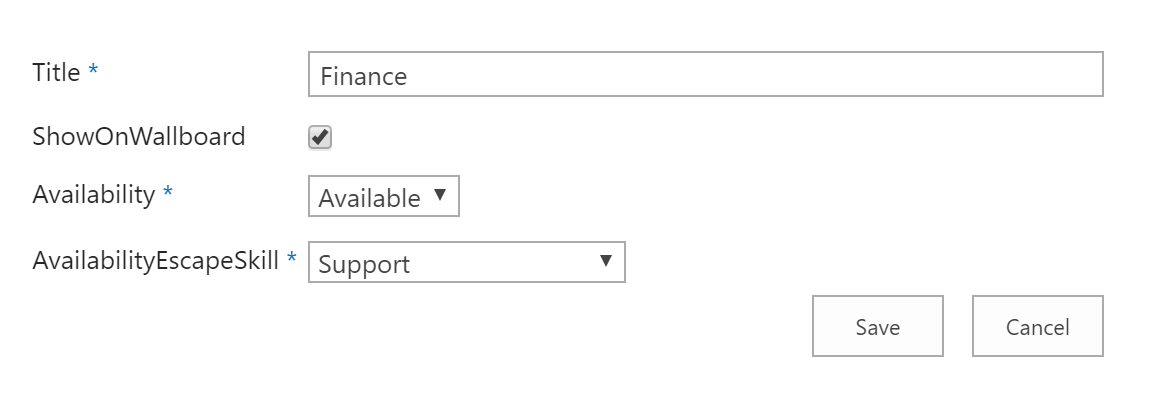
| Item | Description |
|---|---|
|
Title |
This field contains the name of the Skill. |
|
ShowOnWallboard |
When this box is ticked, the Skill will be shown on the Inflight Wallboard and Snapper. Note This setting does not affect the WebWallboard. You can use URL filters here. For more details, see: Setting parameters (data filters) using URL formatting |
|
Availability |
When entering the queue, the system checks for agents based on their presence status in Microsoft Teams.
Note Pay attention to the UCC setting LowestHuntPresence. This setting determines which agent statuses are considered "Available" for the skill. For example, if LowestHuntPresence is set to "Busy," the system will consider agents with "Available," "Busy," or "Away" statuses as "Available" for the skill. This means that even if an agent is marked as "Busy" or "Away," they will still be included in the pool of agents available to handle calls. |
|
EscapeSkill |
When the results of the check come in negative, the conversation will be changed to this Skill |
Description
An extension on the standard Skill is the Countdown Skill. Here Agents with the Skill value of 100 will be hunted, till the Countdown is started. After that the skill value of the agents being hunted will be lowered till reaching zero. The countdown time speed is set by the value (seconds)"EndCountdownSeconds". Furthermore it is possible to be forwarded to another Skill when reaching zero, this can also be another Countdown Skill.
Calculation example:
Start time is 10 end time is 20. So the first 10 seconds only Agents will be hunted with the score 100. Afterward the Skill Score will be lowered by 5% (100 (score) /20 (seconds)) per seconds.
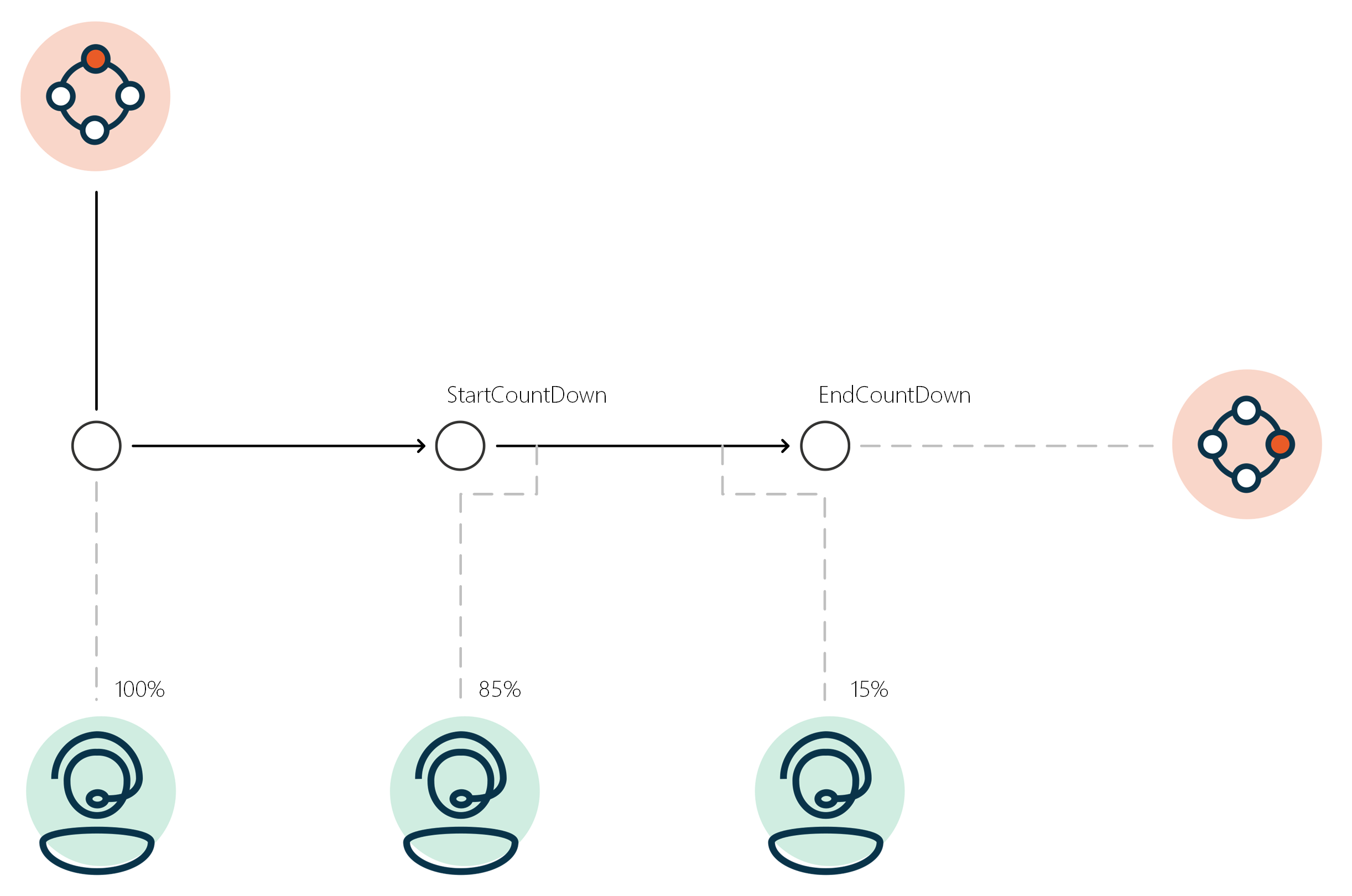
Explanation per field
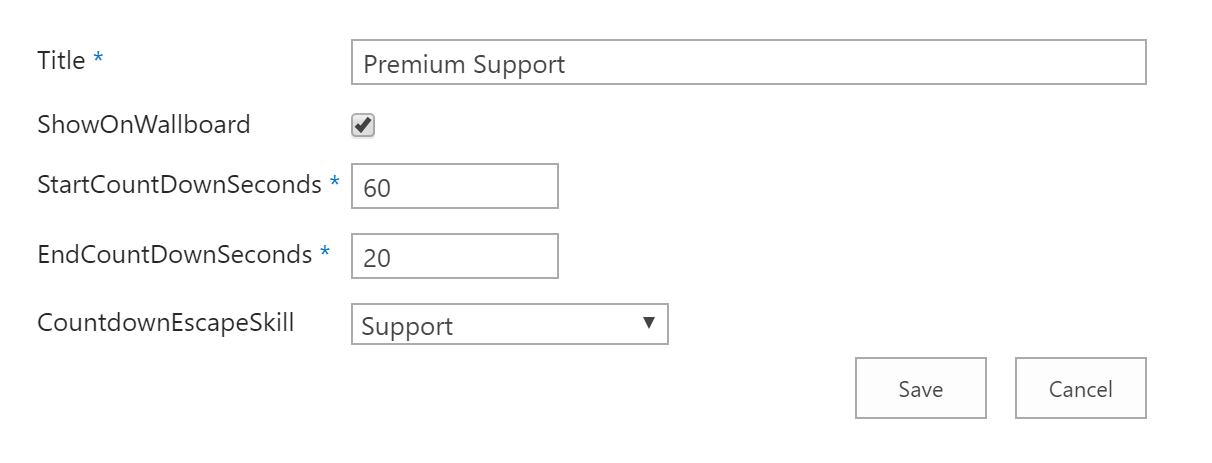
| Item | Description |
|---|---|
| Title |
This field contains the name of the Skill. |
| ShowOnWallboard |
When this box is ticked, the Skill will be shown on the Inflight Wallboard and Snapper. Note This setting does not affect the WebWallboard. You can use URL filters here. For more details, see: Setting parameters (data filters) using URL formatting |
| StartCountdownSeconds |
Is the number of seconds to wait before the second countdown starts counting down. You can set this value to ‘0’ if you want the second countdown to start straight away. |
| EndCountdownSeconds |
Is the number of seconds till the Countdown takes reach 0, counting from StartCountdownSeconds. |
| EscapeSkill |
When the Countdown reaches 0, then the conversation will be changed to this Skill. |
Note
The UCC will waits for the hunt to fail, before escaping.
Note
When empty, the conversation will remain in the current Skill.
Description
An combination on the Countdown Skill and the Availability is the Countdown Availability Skill. Here the Skill first checks the availability of the Agents (if false, then escape), then Agents with the Skill value of 100 will be hunted, till the Countdown is started. After that the skill value of the agents being hunted will be lowered till reaching zero. The countdown time speed is set by the value (seconds)"EndCountdownSeconds". Furthermore it is possible to be forwarded to another Skill when reaching zero, this can also be another Skill.
Calculation example:
Start time is 10 end time is 20. So the first 10 seconds only Agents will be hunted with the score 100. Afterward the Skill Score will be lowered by 5% (100 (score) /20 (seconds)) per seconds.
Explanation per field
| Item | Description |
|---|---|
| Title |
This field contains the name of the Skill. |
| ShowOnWallboard |
When this box is ticked, the Skill will be shown on the Inflight Wallboard and Snapper. Note This setting does not affect the WebWallboard. You can use URL filters here. For more details, see: Setting parameters (data filters) using URL formatting |
| Availability |
When entering the queue, the system checks for agents based on their presence status in Microsoft Teams.
Note Pay attention to the UCC setting LowestHuntPresence. This setting determines which agent statuses are considered "Available" for the skill. For example, if LowestHuntPresence is set to "Busy," the system will consider agents with "Available," "Busy," or "Away" statuses as "Available" for the skill. This means that even if an agent is marked as "Busy" or "Away," they will still be included in the pool of agents available to handle calls. |
| StartCountdownSeconds |
Is the number of seconds to wait before the second countdown starts counting down. You can set this value to ‘0’ if you want the second countdown to start straight away. |
| EndCountdownSeconds |
Is the number of seconds till the Countdown takes reach 0, counting from StartCountdownSeconds. |
| EscapeSkill |
When the availability is false or the Countdown reaches 0, then the conversation will be changed to this Skill. |
Note
The UCC will waits for the hunt to fail, before escaping.
Description
When the maximum of the queue is reached at the time a new call session gets into the skill's queue the Ucc will transfer the call to the escape skill.
Explanation per field
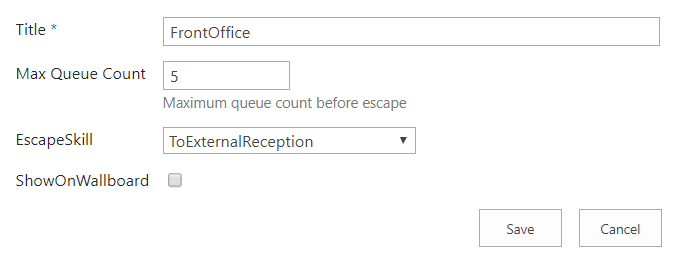
| Item | Description |
|---|---|
| Title |
This field contains the name of the Skill. |
| ShowOnWallboard |
When this box is ticked, the Skill will be shown on the Inflight Wallboard and Snapper. Note This setting does not affect the WebWallboard. You can use URL filters here. For more details, see: Setting parameters (data filters) using URL formatting |
| Max Queue Count |
Maximum queue count before escape |
| EscapeSkill |
When the maximum queue count has been reached, then the new conversation will be changed to this Skill. |
Description
A Forward Skill is a Skill without Agents, but will transfer a Caller directly to a number or SIP The Session Initiation Protocol, or SIP, is a protocol for multimedia communication (audio, video and data communication). SIP is also used for Voice over IP (VoIP). SIP has interactions with other Internet protocols such as HTTP and SMTP. address.
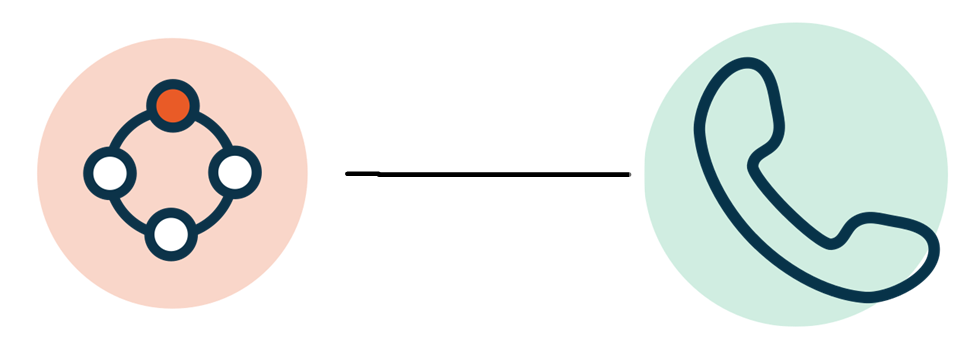
Explanation per field

Note
Make sure there are no spaces behind the address and the address consists of small caps only
Chat Skill isn't used in Dialogue Cloud. If you want to use Skills for WebChat with WebAgent, you can use the Standard Skill.
Forward Chat Skill isn't used in Dialogue Cloud.
Create/Edit/Remove item
Item can be created, edited or removed.
Warning
Updates to the system take place in real-time. Entering the incorrect information here may cause issues with your software. Proceed with caution.
- Open the list.
- Select the Add new item button.
- Enter the correct data in the window that appears.
- Select the Save button.
- Open the list.
- Tick the respective item.
- Select the “Edit Properties” button.
- Enter the correct data in the window that appears.
- Select the “Save” button.
- Open the list.
- Tick the respective item
- Select the “Delete Item” button.